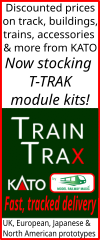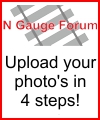- Welcome to N Gauge Forum.
Bringing Manufacturing back to the UKStarted by joe cassidy, February 09, 2017, 11:31:36 AM Previous topic - Next topic0 Members and 1 Guest are viewing this topic.
User actions
| Please Support Us!
November Goal:
£100.00 Due Date: Nov 30 Total Receipts: £110.67 Above Goal: £10.67 Site Currency: GBP 111% November Donations |





